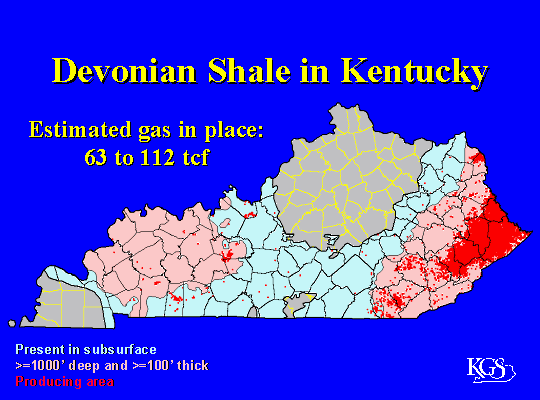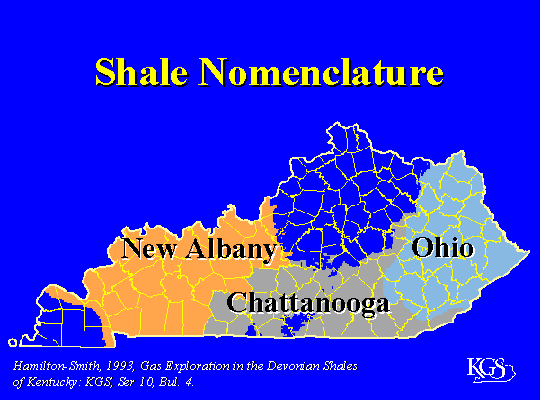 |
DEVONIAN SHALE
What is Devonian Shale Gas? Devonian shales were formed approximately 350 million years ago in a shallow sea that covered the eastern half of what now constitutes the continental United States. Devonian shale gas is defined as natural gas produced from the fractures, pore spaces, and physical matrix of shales deposited during the Devonian period of geologic time. Gas shales are classified as continuous type natural gas plays: accumulations that are pervasive throughout large geographic areas and offer long-lived reservoirs. In contrast to a conventional gas reservoir, shale is a self-sourced reservoir where source rock and reservoir rock are combined into a single geologic unit. In general, shale reservoirs have the following characteristics:
Fractured shales have been a source of gas for the U.S. gas industry since its earliest days. The first known commercial natural gas production in the United States was from a fractured shale reservoir in the Appalachian Basin. The largest shale gas field in north America is the Big Sandy Field in eastern Kentucky and West Virginia with more than 25,000 shale gas wells developed.
| ||
Company Profile Mission Industry Overview Unconventional Gas Illinois Basin New Albany Shale Rough Creek Fault System Articles Industry Links Glossary of Terms Contact Us Natural Gas Prices |
Copyright © 2005 - Kentucky Natural Gas Corporation - All Rights Reserved - Ph: (405) 949-2686

